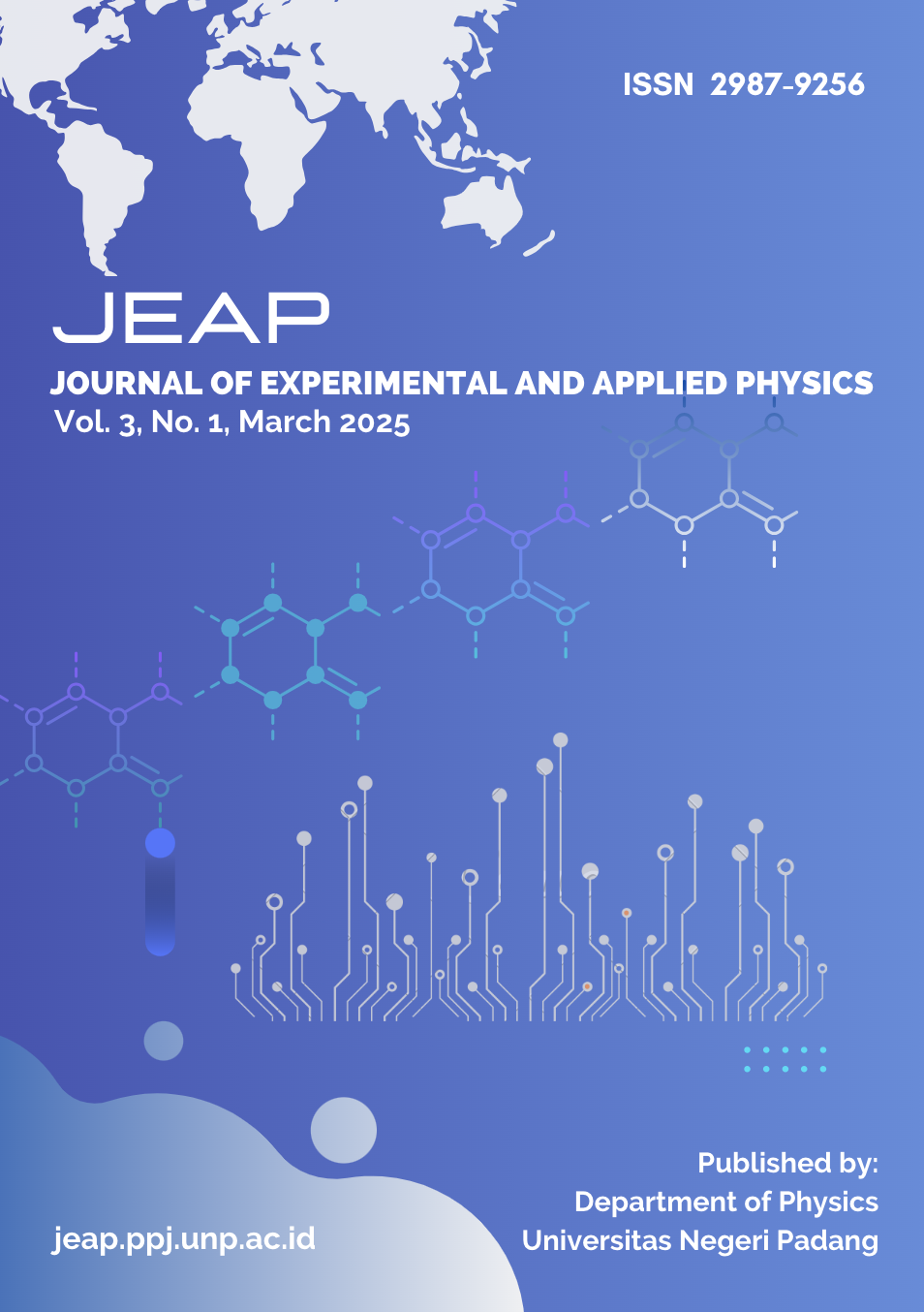Effect of SiO2/Chitosan Composition Variation on Functional Groups in Hydrophobic Cellulose Paper for Water/Oil Separation
DOI:
https://doi.org/10.24036/jeap.v3i1.90Keywords:
Cellulose Paper; SiO2-Chitosan; Functional Groups; Hydrophobic; FTIR (Fourier Transform Infrared Spectroscopy)Abstract
The current research is conducted to study the effect of varying compositions of SiO2-Chitosan on the changes occurring in the functional groups available in cellulose paper that shows hydrophobic nature, which can be used for water and oil separation purposes. The composite layer studied is the silica-chitosan solution coated over the cellulose paper using the dip-coating method. Varying compositions of SiO2-chitosan studied are (0.6g:0.3g), and (0.3g:0.6g). Characterization by FTIR revealed the presence of the main functional groups, i.e., Si-O-Si, C-H, C-O, N-O, N-H, C-N, and O-H, with a range of 938-3784 cm⁻¹ strain. The identification of these functional groups attests to the incorporation of the SiO2-chitosan compound on the surface of the cellulose paper. This functionalization imparted a hydrophobic layer, as demonstrated by the capacity of each composition to cause the characteristic spectrum of the SiO2-chitosan compound. The results of this study confirm that the modification of SiO2-Kitosan composition has significant influences on the chemical properties and physical stability of the composite coating. This result explains the great potential of cellulose-based materials in water and oil separation technology. In addition, these results enable the development of sustainable materials with great efficiency in fluid separation applications.
Downloads
Published
How to Cite
Issue
Section
License
Copyright (c) 2025 Fauziyah Almunazar, Ratnawulan, Yenni Darvina, Fadhila Ulfa Jhora

This work is licensed under a Creative Commons Attribution-ShareAlike 4.0 International License.




 Journal of Experimental and Applied Physics
Journal of Experimental and Applied Physics